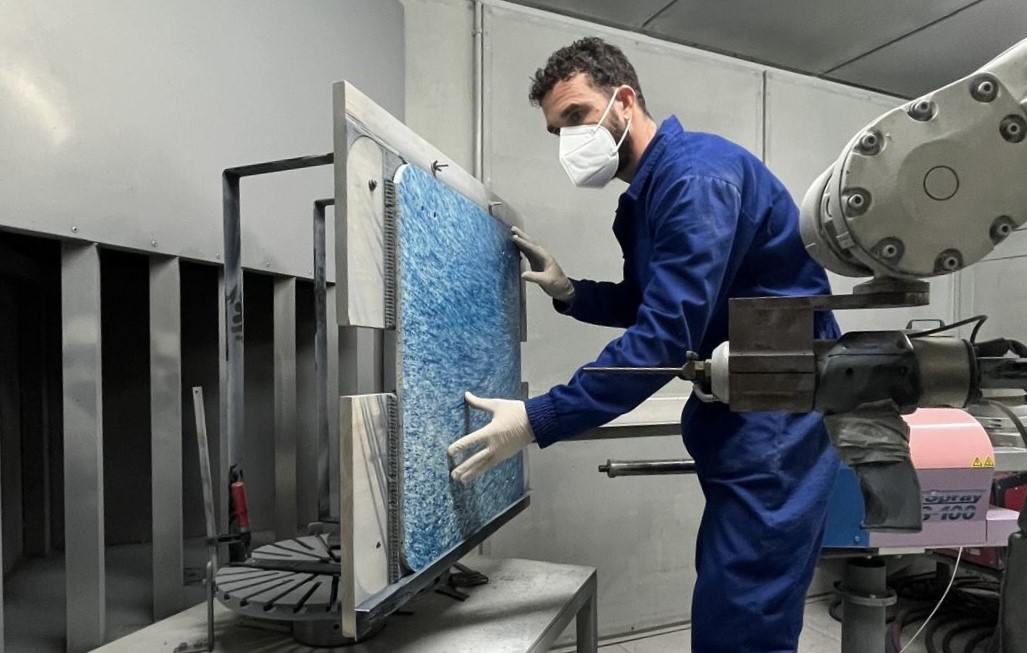
UB researchers receive funding to develop photocatalytic panels that reduce urban pollution
The University of Barcelona (UB) has received an Llavor grant from AGAUR worth €20,000 to design urban panels coated with photocatalytic materials that reduce air pollution efficiently and sustainably. The project is led by Dr. Irene García, Professor in the Department of Materials Science and Physical Chemistry at the UB Faculty of Chemistry.
According to Dr. García, this initiative “is not only focused on developing new photocatalytic materials, but also on redefining how these can be applied in urban infrastructures. The combination of efficiency, scalability and sustainability makes this project an innovative solution for improving air quality and combating atmospheric pollution in modern cities.”
High-performance material
Heterogeneous photocatalysis is a well-documented process in scientific literature, where materials such as titanium oxide act as catalysts to degrade pollutants using sunlight. This process transforms toxic gases such as nitrogen oxides and volatile organic compounds —responsible for respiratory and cardiovascular diseases— into less harmful by-products.
The UB project is developing a high-performance material and introducing a thermal spray coating technology. This technique preserves the integrity and photoactive properties of the coating, improving adhesion, durability and efficiency compared to conventional methods. “Thermal spraying enables efficient and rapid coating on different surfaces while maintaining the material’s photoactive properties and reducing costs compared to other techniques,” explains Dr. García.
This technological solution, developed through research at the UB Thermal Spray Centre, incorporates several key innovations. Laboratory tests have shown that this formulation can degrade pollutants up to three times more efficiently than existing commercial solutions.
It also improves the material’s mechanical and chemical resistance, extending its lifespan. Furthermore, the material’s structure and application method allow it to be integrated into various urban infrastructures such as noise barriers, information panels, building façades, and urban furniture.
Manufacturing with recycled plastics
The new project aims to optimize the coating formulation to enhance efficiency, stability, and durability while reducing production costs and refining the manufacturing process. In parallel, it promotes the use of recycled plastics in panel production, reinforcing the commitment to the circular economy.
The technology will be validated through a proof of concept in urban infrastructures —such as façades, noise barriers, and street furniture— and will include an environmental and economic analysis to assess its profitability and define commercialization strategies. The results will make it possible to quantify its contribution to reducing air pollution and establish the basis for large-scale implementation.
Alignment with the United Nations Sustainable Development Goals (SDGs)
The project aligns with several United Nations Sustainable Development Goals (SDGs). Specifically, it contributes to SDG 3 (Good Health and Well-being), by reducing air pollutants that can lower the incidence of respiratory and cardiovascular diseases; SDG 9 (Industry, Innovation and Infrastructure), through the development of an advanced photocatalytic coating and a scalable manufacturing process that fosters innovation in sustainable materials; SDG 11 (Sustainable Cities and Communities), by improving air quality and promoting cleaner, healthier urban environments; and SDG 13 (Climate Action), by reducing pollutant emissions and using recycled materials that help mitigate climate change and promote a circular economy.
The project, reference number 2025 LLAV 00016, is part of the Knowledge Industry call under the category “Llavor grants for innovative projects with potential for incorporation into the productive sector.” The funding is provided by the Department of Research and Universities of Catalonia and is intended to support the valorization of technology or knowledge generated by research teams in Catalonia.

